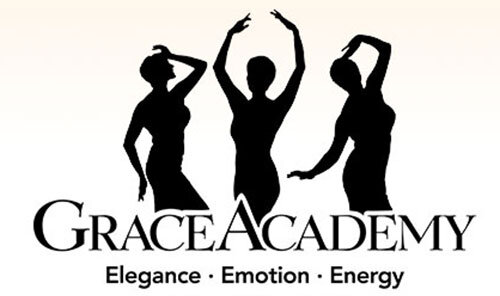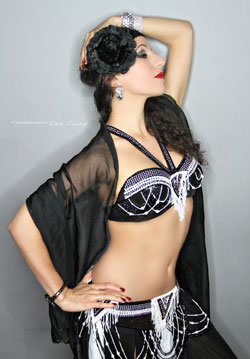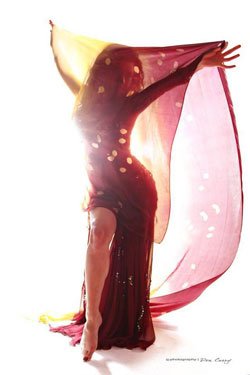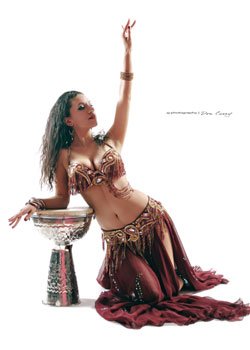Dancer Origin Stories – Tava
After Tava’s workshop in Portland, Maine
This installment of Dancer Origin Stories features the glorious Tava. I have hosted Tava in the past for workshops at my studio in Portland, Maine and I always look forward to the next opportunity to learn from her.
Tava has been a professional belly dancer in New York City and the surrounding areas for 20 years. She’s currently based in Norwalk, CT, where she brings her deep knowledge and caring attitude to her weekly classes, while continuing to perform regionally and teach workshops up and down the East coast.
Her style is classic, timeless, and she brings her entire self to each and every moment on stage.
Now… on to Tava’s Origin Story!
Q. What is your first memory of dance?
I grew up in San Francisco in the 70’s. My mother worked in a restaurant/dance club where I frequently spent time. At night, the DJ would play 70’s disco and funk and I danced with my mother and her friends. At home, the party continued. My mother and I played records and danced to Earth Wind & Fire, Stevie Wonder, & many more. We didn’t have much back then, but I learned early on that when life gets tough, the more one dances, the better.
Q. Was social dance or music a part of your life growing up? If so, how?
Absolutely. Everyone danced. My family would have parties and people turned on music and went for it. My grandparents would clear the floor dancing wildly every chance they got. They were a sight to see. Dance was a huge part of my childhood.
Q. How did you first encounter belly dance?
Aside from a brief encounter involving a few lessons in kindergarten, I discovered it while working for a variety show in NYC. The performer, Andrea, completely captivated me. She danced to music from MENAHT regions and I fell in love with it. I finally worked up the courage to start taking classes with her in January of 2000. I always remember that because there was some concern about Y2K and technology collapsing so I thought, “If there’s no global disaster, nothing is stopping me from learning this dance!”
Q. What phase of life were you in when you took your very first dance class?
I was in my early 20’s and living in Manhattan at a time when there were many live music venues and dancers of every style could perform 7 days a week. I loved walking out of my apartment and sharing a community with people from all over the globe. NYC made me a curious student and the people in my East Village neighborhood were my teachers.
Q. Many dancers took classes when they were little, but then returned to dance as adults. In your case, what drew you back to dance?
I stopped dancing in my teens because of body changes and spiraling insecurities. I started again in my 20’s because I was becoming more confident and wanted the outlet for self-expression that dance offered. As a shy, introverted person, I am far more comfortable connecting through movement and on stages than I am talking to people I don’t know. Dance gave me (and continues to give me) a social life, friends, and experiences that I would never have if I had to rely on conversation to get to know people.
Q. What led to you becoming serious about your dance studies?
I always thought it would be a hobby, but my teacher regularly provided student troupe performance opportunities with live music. It was usually Raquy and her drumming students. I also went to see shows almost every night and it was intoxicating to see how the dancer interacted with the bands.
Little by little, I started to perform as a soloist and I was driven by a relentless desire to improve. Eventually, it just took on a life of its own. When I moved to CT, my teacher encouraged me to start offering classes and I discovered that teaching was another genuine passion of mine.
Q. What allowed you to become serious about belly dance?
Put simply, there’s no feeling like it in the world. Initially, I wanted to learn the movements because they were “cool” and unlike anything I danced in my childhood. Then I began to see how dance is a vehicle for cultural pride and a connection to “home”, and that really drew me in. I began to see myself as an aspiring ambassador and it was an honor to perform with musicians from Egypt, Turkey, Lebanon, Greece, etc. To hear their stories and be invited into families’ homes blew the lid off of my world and what I thought I knew. That’s the feeling that has sustained me all these years.
Q. How do other dance forms you have studied inform your primary style?
I did the usual ballet & jazz dance as a child but gave up ballet first because it was at odds with what gymnastics was doing to my body. Gymnastics training helped me develop strength, coordination and flexibility which I still draw upon in my career.
My jazz teacher really took a chance on the shy little me and I was her student from 8 to 17 years old. I can still hear her voice in my head, telling me “chin up…don’t look down!” She was key in helping me access a larger personality on stage and her eye for detail really polished my movements.
Q. Tell me about one of your most influential teachers.
That would be Andrea (Anwar) Beeman in NYC. I still rely on her for mentoring, feedback and the occasional private lesson. Having someone to turn to at every step of my career has been so valuable whether I’m in a rut, need a music recommendation or if I’m being hard overly critical and need a reassuring voice.
I would also add that the families I have consistently danced for are some of my most influential teachers. Their natural movements have really helped me be less refined and polished so that I can drop my center of gravity and get the feeling of how regional differences shift the nuances of the movements.
Q. Share the memory of learning a movement that came easily to you…
I honestly cannot recall any movements coming easily to me. My posture was a mess before bellydance. I had terrible swayback and even hip drops looked more like some sort of twerk hybrid.
I suppose, if I had to pick, I had an easy time with upper body isolations. I could move my rib cage all around with a lot of thoracic spine mobility (thanks to early jazz dance classes). Now I tend to use that for more fluidity in the rib cage – I don’t do a ton of isolations outside of the occasional table solo accent.
Q. And a movement that you had to work hard to master.
Just one? (haha) I suppose that would be the shimmy. Gymnastics left my knees in less than awesome shape and the movement would leave my patella feeling wonky.
I realized that to protect my joints, I needed to keep the movements small but I was afraid of hurting myself and wound up just freezing. I had countless lessons with Andrea trying to unlock my shimmy but still keep the movement in my knees manageable. I still have a wandering patella so I rely a lot on a fast twisting shimmy with no knee engagement if I want a larger movement that I can sustain for a longer time.
Q. Tell me about one “ah hah” moment that you recall, whether technical, emotional, or conceptual.
Learning to move to odd time signatures was a real struggle initially. I listened to 9/8’s for hours and would constantly lose my way/lose the “1.” My feet would tie themselves in knots. Then I went to a weekend dance retreat with Andrea and Raquy. There, in a room full of drummers, the rhythm finally took root in my body. I stood directly behind Andrea and mirrored her foot patterns. Eureka! It clicked!
Q. What dance skills translate to your everyday life?
In situations where I need to present, teach, lead a team, I draw on my performance posture and tap into “TAVA” when I might be feeling more like “tava.” It’s like a cloak I can put on when I step out into the world. Beyonce has Sasha Fierce and I have all-caps TAVA, ha!
Q. What everyday skills translate to your dance life?
I am a counselor by training and I’ve returned to that field part time as a career counselor. I spent years refining an ability to feel and express empathy. I translate that into my performances by forming a fast rapport with audiences using mostly non-verbal methods. I always say that I “take the Psychological pulse” of the room before I dance and then fill whatever gaps are necessary so that we have a true shared experience.
About Tava
Tava Naiyin is a highly regarded professional belly dancer, instructor, choreographer and author of “Little Book of Big Advice: Enlightening Ideas for Bellydance Professionals.”
Tava performs regularly throughout NYC and the tri-state area in a style described as “Vintage Oriental with Turkish flair.” Dancing at galas, family occasions, cultural events, and theatrical productions, she prides herself on having a career with as much variety as possible.
You can study with Tava online or in person!











